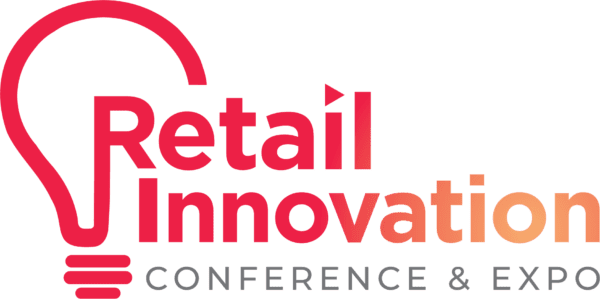Today’s parenting consumer is time-starved, research-obsessed and driven by trust, making their path to purchase more intentional than ever. With an overwhelming number of options in the marketplace, brands can no longer rely on paid tactics alone to stand out. PR still plays a critical role not just in building awareness but in guiding parents through every stage of the purchase funnel, from discovery to decision-making to advocacy.
The modern parent doesn’t just buy products; they invest in solutions that align with their values, solve real problems and come recommended by sources they trust. This shift has transformed how brands need to think about public relations. It’s no longer about just generating buzz or securing a single placement. It’s about creating a strategic communications ecosystem that meets parents where they are, builds genuine credibility and turns customers into advocates.
Brands can consider four key aspects of how PR strategically influences the purchase funnel to ensure they’re meeting modern parents with the right message, at the right time and in the right place.
Awareness: Meet Parents Where they Already are
Gone are the days when parents discovered products through traditional advertising alone. Today’s parents are discovering brands through organic touch points, scrolling through trusted news sites and social media platforms, browsing holiday gift guides, catching segments on morning shows or hearing mentions on their favorite parenting podcasts. PR puts parenting brands in these trusted environments where discovery happens naturally.
Consider how parents actually shop in 2025. They’re not sitting through commercial breaks hoping to find their next baby carrier. They’re researching product categories on Google, reading “Best of” lists during nap time and asking Facebook groups for recommendations. When they search for “best toddler car seats,” articles from real publications rank high and drive organic brand discovery. A well-placed product mention in a reputable parenting publication or a feature in a seasonal gift guide can capture parents at the exact moment they’re looking for solutions.
This organic discovery is particularly powerful because it doesn’t feel like advertising. Parents trust editorial content more than sponsored posts because it appears unbiased and informative. When a parenting magazine includes your stroller in their annual gear guide or “Best of” list, it’s not just exposure, it’s validation that your product is worthy of consideration alongside industry leaders in an extremely crowded market.
PR teams that understand this shift focus on building relationships with editors, producers and content creators who have already earned parents’ trust. They provide valuable, newsworthy content that serves the audience first, not the brand. This approach ensures that when parents are in research mode, brands appear in the places parents naturally turn to for information.
Another powerful tactic in building awareness is the gifting influencers who are known to shape early discovery. Even before a parent begins researching, they may encounter a product being used naturally in an influencer’s content, whether it’s during a “day in the life,” in a morning routine or even in a casual unboxing. These touch points help build familiarity before a brand even shows up in a Google search or holiday gift guide. Gifting allows a brand to generate those early seeds of awareness in trusted spaces, often accelerating word-of-mouth and search behavior.
Trust: Building Believability Through Storytelling
In the parenting space, trust isn’t just important — it’s everything. Parents are making decisions that affect their children’s safety, health and development, which means they need to believe not just in a product but in the brand behind it. Third-party validation becomes crucial in this environment, and PR is uniquely positioned to build that type of credibility.
Effective PR in the parenting space leverages key opinion leaders and industry experts, pediatricians, child development specialists, doulas, certified sleep consultants and other trusted experts to provide professional validation. When a pediatrician recommends a specific baby formula or a sleep expert endorses a particular swaddle, it carries weight that no amount of paid advertising can match. These expert endorsements serve as trust signals that help parents feel confident in their choices.
But professional validation is only part of the equation. Parents also respond to stories that show how a product fits into real life. This is where PR’s storytelling strength shines. Rather than focusing on product features, smart PR campaigns showcase authentic experiences, how a baby monitor helped a working mom feel connected during business trips or how a high chair made mealtime less stressful for a family dealing with feeding challenges.
The key is finding that fine line between storytelling and selling. Parents can spot overly promotional content immediately, and they’ll dismiss it just as quickly. The most effective PR-driven stories feel genuine because they are genuine. They highlight real problems, real solutions and real outcomes without feeling like a sales pitch. Parents are looking to be seen, heard and understood, and the most impactful brands are approaching their strategies and launching their campaigns with that idea at the forefront.
User-generated content and testimonials play a vital role here too. When real parents share their experiences with a product, it creates peer-to-peer trust that’s incredibly valuable. PR teams that can facilitate and amplify these authentic stories create a foundation of believability that supports the entire purchase funnel.
Word-of-Mom: Driving Peer Influence and Advocacy
If trust is the currency of parenting purchases then word-of-mouth is the distribution system. What parents call “word-of-mom” is the phenomenon where peer recommendations carry just as much weight (if not more) than any professional endorsement. PR has the power to fuel this organic advocacy by getting brands talked about in parenting communities and social groups.
Earned media doesn’t just inform, it influences what parents recommend to one another. When a parenting blog features a product review or a podcast host mentions a brand they love, it ripples through social networks. Parents share these discoveries in Facebook groups, Instagram stories and TikTok videos, creating a multiplier effect that extends far beyond the original placement.
Smart PR teams create shareable moments that convert naturally into user-generated content. This might be a limited-edition product launch that gets parents excited, a helpful parenting tip that solves a common problem or a brand stance on an issue that resonates with family values. When parents organically share these moments, they’re not just spreading awareness; they’re endorsing the brand to their personal networks.
The beauty of this approach is that PR can sometimes fuel influencer content without paying for it. When a brand generates genuine newsworthy moments, sends personalized gifts to relevant influencers, surprises them during relevant seasonal moments, etc., content creators naturally want to share products they love with their audiences.
These organic seeding efforts, when done with intention and relevance, can often result in more authentic and enthusiastic endorsements than paid partnerships. Gifting also gives influencers the opportunity to test and genuinely connect with a product before sharing, leading to content that resonates more deeply with their followers. Importantly, influencer gifting shouldn’t be viewed as a backup to traditional placements, but rather as a complementary strategy that amplifies earned media.
The viral nature of social media means that a single well-placed PR hit or an influencer gifting unboxing can spawn dozens of secondary conversations. A mention on a morning show can lead to TikTok videos, which inspire Facebook group discussions, which prompt Instagram stories. Each touch point reinforces the brand’s message while feeling authentic to the platform and audience.
In it for the Long Haul: Why PR Pays Off over Time
Unlike paid advertising, which stops working the moment you stop paying, PR has remarkable staying power. Articles live online forever, and parents search months before they buy. A well-placed PR hit can resurface around seasonal moments, registry season, back-to-school or holidays, year after year, continuing to drive discovery and sales long after the initial placement.
This longevity is particularly valuable in the parenting space because purchase timelines are often extended. Parents might research cribs during the second trimester but not buy until the third. They might bookmark a high chair article when their baby is four months old, but not purchase until they’re ready to start solids at six months. Having that content available throughout the research process keeps brands top-of-mind during these extended consideration periods.
PR also supports retail goals in ways that extend beyond immediate sales. When a brand has a strong earned media presence, it makes retail pitch meetings more successful. Buyers want to stock products that have buzz, media coverage and consumer demand. A robust PR portfolio demonstrates market validation and helps secure retail partnerships that drive long-term growth.
The cumulative effect of consistent PR efforts creates brand authority that compounds over time. Each placement builds on the previous ones, creating a reputation that makes future PR efforts more successful. Journalists and producers remember brands that consistently provide valuable content, making them more likely to include those brands in future stories.
This long-term approach also supports customer lifetime value. When parents discover a brand through trusted media, have positive experiences and see continued coverage over time, they’re more likely to become repeat customers and brand advocates. They’ll recommend the brand to other parents, creating that valuable word-of-mom effect that drives organic growth.
The Strategic Imperative
PR isn’t just about generating buzz; it’s a strategic growth engine that drives trust, loyalty and long-term brand equity. For parenting and family-focused brands, integrating PR early in the retail roadmap can mean the difference between a one-time sale and lifelong customer advocacy.
The brands that succeed in today’s parenting market are those that understand PR’s unique ability to build authentic connections with their audience. They recognize that parents don’t just buy products, they buy into brands that understand their needs, share their values, and earn their trust through consistent, valuable communications.
As the parenting marketplace continues to evolve, brands that prioritize PR from the start will earn lasting relevance with today’s discerning parents. They’ll be the brands that parents discover naturally, trust completely and recommend enthusiastically. In a world where attention is fragmented and trust is hard-won, that’s not just a competitive advantage; it’s a necessity.
Mallory Brown serves as an SVP within 5WPR‘s Consumer Lifestyle division, specializing in parenting. She spearheads comprehensive public relations campaigns for her clients, which range from up-and-coming brands to widely recognized global companies within the baby/juvenile/parenting goods/gear and parenting app space.




